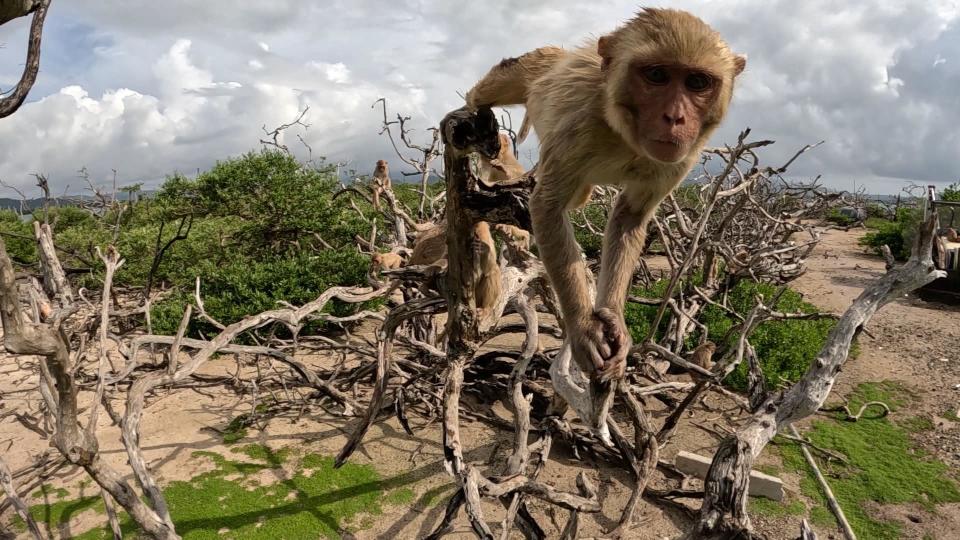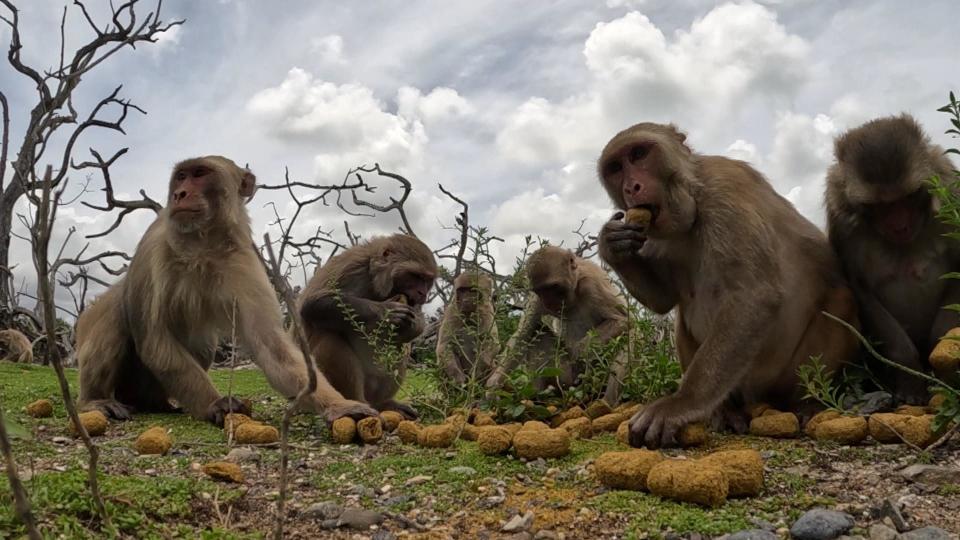Scientists are learning from monkeys that miraculously survived Hurricane Maria
Scientists are studying how monkeys living on a remote island off the coast of Puerto Rico during and after the devastation of 2017's Hurricane Maria have adapted to life after the storm.
Researchers on Cayo Santiago have access to blood tests done on the rhesus macaques for more than a decade, biologist Noah Snyder-Mackler of Arizona State University said. Recently they found the immune systems of monkeys who had lived through the hurricane seemed to have aged, on average, an extra two years – that's six to eight years in human years.
"We think that those individuals who were able to have stronger bonds, stronger friendships might have been protected from this really stressful event," Snyder-Mackler said.
He and other researchers are trying to figure out what exactly makes some of the rhesus macaques, which share 94% of their DNA with humans, more resilient to the hurricane than others.
How monkeys came to Monkey Island
In the 1930s, American primatologist Clarence Carpenter wanted to create a naturalistic research facility to study the primates' social and sexual behaviors. So he took 500 rhesus macaques from India to Cayo Santiago, also known as Monkey Island. It was a grueling 14,000 mile sea voyage that lasted 51 days.

Many of the monkeys died from disease in their early years on the island. By the 1950s, scientists began tattooing the rhesus macaques and taking a daily census. The meticulous record keeping has continued with today's monkeys, all of whom are descended from the original group, giving scientists rare access to more than six decades of their biological and behavioral data.
And some of that behavior changed after Hurricane Maria.
Riding out Hurricane Maria on Monkey Island
During Hurricane Maria, 155-mile-an-hour winds battered homes and buildings in Puerto Rico, destroying everything in sight, including the power grid and communication systems. Nearly 3,000 people died. There was no way for the researchers to get to Monkey Island. The team eventually hired a helicopter to fly over.
Angelina Ruiz-Lambides, then the scientific director of Cayo Santiago, joined the pilot. She was horrified by what she saw.
"I see this destruction, like, 80 plus years of work completely flattened," she said.
Monkey Island was covered by a dense canopy of trees and lush foliage before Maria. After the storm, the island was buried in dead branches. The island lost two-thirds of its vegetation.
Ruiz-Lambides couldn't see any monkeys and she worried they'd all been killed. After spotting a group, she estimated that a few hundred monkeys out of 1,700 had survived. But she was way off.
Once the research staff was able to return and do a complete census, they found that most of the monkeys had lived. They estimated about 50 monkeys died.
They wondered how the monkeys could have survived. They don't know for sure, but James Higham, a New York University biologist, has a theory about what they ate
"Although the hurricane did dramatically de-vegetate the island, one thing it also did was deposit a great amount of seaweed and algae onto the island," Higham said. "And so, one possibility is that the monkeys were eating more of this kind of vegetation."
Life on Monkey Island after Maria
There are now roughly 1,800 rhesus macaques on Cayo Santiago who have adapted to a new, rougher environment.
Attempts to replant trees on the island have been stymied; the monkeys, naturally curious, uproot the trees before they have a chance to grow. There's now very little shade on the island. The monkeys have been forced to sit together in the few shaded areas.
"So an interesting thing that we saw is that individuals became more social," Higham said.
The rhesus macaque forms strong social relationships with family members and their best friends. They live in female-led groups, with mothers, daughters, aunts and grandmothers sticking together. Males leave when they reach maturity and join other groups for breeding.

Rhesus macaques can be quite aggressive, especially around food and during mating season. When the researchers feed the monkeys each morning, there's a hierarchy, with the highest-ranking monkeys eating first.
"I've even seen high-ranking individuals go up to a low-ranking individual who is eating food in their mouth and hold their mouth open and take the food out of their mouths and then close it," Higham said.
But the rhesus macaques now seem more tolerant of each other than they were before Hurricane Maria, which at first seemed counterintuitive since there's more competition for resources.
"I think it can go both ways," Higham said. "We're capable of great greed and competition and cruelty, but humans are also capable of great kindness and compassion and friendship and generosity. And that kind of duality exists in rhesus macaque societies, too."
Monkey Island research continues
Scientists have delved into new research avenues, looking into what predicts who survives a catastrophe and how quickly they recover.
Rhesus macaques are commonly used for medical research because they're genetically and physiologically similar to humans.
"Given the strong similarity between these primates, these monkeys and us, we know that a lot of this, the work that we're doing and the things that they might do to, you know, be more resilient to this might be translatable to humans, to us," Snyder-Mackler said. "And might provide ways for us to intervene and help buffer against the negative effects of these traumatic events."
Barbra Streisand on her long-awaited memoir
Is hybrid work the new normal?
How a New England lobster shack became one of the top seafood spots in the country

